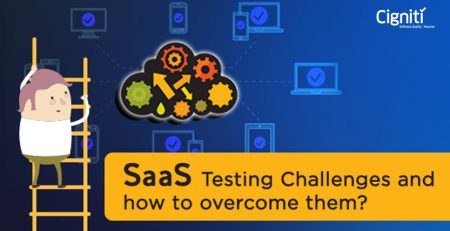Building a perfect Cloud Assurance and Modernization Factory in 2021
Owing to rapid cloud technology adoption, the global cloud migration and application modernization services market is expected to increase more than threefold by 2025.
The cloud migration market in 2020 has shown steady growth, even after the contraction of the global economy due to COVID 19.
The pandemic has significantly restricted operations of on-premise IT systems, and hence, organizations are rapidly migrating their applications towards cloud-based systems to support different lockdown and work from anywhere models.
North America holds the largest market share due to the large scale adoption of AI at the industrial level and Bring Your Own device (BYOD) incorporation in enterprises. The region is also a hub for some of the top cloud migration vendors.
Asia-Pacific is also recognized as the fastest growing market for cloud migration and modernization services due to rapid cloud technology adoption.
Cloud adoption has become critical to IT optimization as enterprises continue to grow their cloud investments to push business forward. A well-designed and solid cloud platform can easily overhaul your company’s operations.
Businesses may become nimbler, reduce inefficiencies, and improve customer experiences by migrating to the cloud. The need for stability and flexibility has never been greater than it is today.
According to Gartner, “Emerging technologies such as containerization, virtualization, and edge computing are becoming more mainstream and driving additional cloud spending. Simply put, the pandemic served as a multiplier for CIOs’ interest in the cloud.”
Each organization’s optimal IT infrastructure is unique, although it frequently includes a mix of public cloud, private cloud, and traditional IT environments.
Adopting a cloud infrastructure, on the other hand, does not have to be an all-or-nothing approach for organizations concerned about disruptions to their operations.
By combining apps into a hybrid cloud model, businesses may start enjoying the benefits of cloud technology while continuing to run assets in their current on-premise settings.
Migrating to the cloud may boost operational performance and agility, as well as workload scalability and security.
Industries such as Banking, Finance, Stock, and Financial Services (BFSI), Health Care and Life Sciences (HCLS), Retail, and Travel & Hospitality (T&H), have seen a remarkable surge in their key business processes moving to the cloud.
Key business processes are moving to the Cloud
According to Sid Nag, research vice president at Gartner, “The events of last year allowed CIOs to overcome any reluctance to move mission-critical workloads from on-premise to the cloud. Worldwide end-user spending on public cloud services is forecast to grow by 23.1% in 2021 to total $332.3 billion, up from $270 billion in 2020. Even absent the pandemic, there would still be a loss of appetite for data centers.”
The following are the key business processes of the aforementioned industries migrating to the cloud.
BFSI: Within retail banking and mortgages, key processes that migrate to the cloud include customer onboarding, KYC, transaction management, and internet banking. In the wealth and investment banking sector, key business processes such as portfolio management, market analysis, transaction processing, fees, and margin management have seen a surge in cloud adoption. For enterprise and corporate functions, processes such as underwriting, collections, settlement, risk management, and CRM have embraced cloud adoption.
HCLS: Real-time workflows for scheduling, registration, billing, claims etc., Telemedicine, Electronic data capture, Master Data Management (clinical trials), and Health information storage and exchange are a few of the key business processes expediting towards cloud adoption.
Retail: Inventory management, Point-of-sale (POS) systems, CRM and customer data analytics, Website and recommendation engine personalization, loyalty program management, and Omnichannel order fulfilment are some of the key business processes adopted by the cloud in the retail segment.
Travel & Hospitality: Processes such as demand forecasting and pricing, integration with other tools/platforms (booking platforms, itinerary, payment platforms, F&B service etc.), analysis of customer reviews, personalized packages & recommendations, and loyalty management are the major business processes of the T& H sector moving towards the Cloud.
While many industries have been moving their key business processes to the cloud, migrating your entire enterprise applications to the cloud has never been easier.
A Typical Cloud Migration Lifecycle
The Cloud Application Migration Lifecycle is a collection of stages in a process for migrating traditional applications to the cloud. A typical cloud migration lifecycle is broadly classified into 3 phases:
Pre-Migration: Assessment and planning are done in this phase. The assessment includes documenting the strategy and fostering stakeholder support, evaluating the current ecosystem and identifying gaps, change management, security roadmap, and recommended remediation to mitigate gaps.
The planning process includes aligning cloud adoption tactics to business outcomes, calculating costs and ROI, analysis of cloud fitment, security, regulation, risk and compliance analysis, and establishing key performance indicators for the cloud.
Migration: Design and migration activities are performed in this phase. The design stage includes identifying the cloud platform, accessing the workload architecture, defining criteria for cloud deployment and service model, developing a mitigation plan, and finalizing cloud design, sizing, and build.
The next steps involve building the cloud, prioritizing migration components, establishing performance baselines, creating a robust migration plan, and then migrating the workloads followed by sync data.
Post-Migration: The last phase involves validation, such as securing governance practices setup and testing, customer experience and business assurance, data assurance, security assurance, and infra, network and scalability testing.
A recent study from International Data Corporation (IDC), a global technology and research and consulting firm, says, “In order to address infrastructure demands, over 90% of organizations globally will use a combination of on-premise/dedicated private clouds, multiple public clouds, and legacy systems by 2022”.
It is thus imperative to scale a robust cloud migration strategy for desired business outcomes.
Desired business outcomes and challenges of Cloud Migration Strategy
The answers to many questions about what to move where, why, how, and when are required for the creation and execution of a logical strategy.
Knowing the answers to these questions will aid you in developing a detailed cloud migration strategy and plan that will enable you to achieve the required goals in terms of current and future company agility, growth, and controlling costs.
Below are some of the key business outcomes expected from cloud migration.
- Cost Optimization: Conversion of CapEx into Opex and right sizing of computing resources and IT infrastructure costs.
- Security: Modernization of IT infrastructure according to best practices and greater application security.
- Accessibility and Convenience: Central location of applications and services with easy and uninterrupted access; Improved collaboration among teams.
- Leverage new technologies: Leverage complex, cloud-friendly applications and services across AI/ML, data analytics, data lakes, etc.
- Disaster Recovery: Remote access to systems in a secure virtual environment enables quicker recovery of critical systems in the event of a disaster.
To take advantage of emerging possibilities and pivot to address business and market developments, your cloud computing migration strategy must provide elasticity, agility, and scalability.
The cloud architectural layers of software as a service (SaaS), infrastructure as a service (IaaS), and platform as a service (PaaS) will be used to achieve these goals.
Based on business needs and best practices, you can use these in hybrid and multi-cloud systems.
Even though many organizations race to implement cloud computing procedures, it is not a simple undertaking. Cloud migration comes with its own set of challenges.
- Downtime: Low levels of reliability, network connectivity issues, and disruptions during live migration.
- Data loss: Lack of proper data backup, power outage at the data center, and attack on the data center.
- Security and Compliance: Compliance violations, contractual breaches, insecure APIs, misconfigured servers or lapses by CSP, and malware, external attacks, errors, etc.
- Inadequate visibility and control: Inadequate control over resources handling data centers, lack of fundamental monitoring capacities, and lack of alerts to threats.
- Assessment of technical feasibility: Incompatibility of current IT architecture, vulnerabilities in technology used by CSP, and complexity due to legacy app architecture.
To overcome these challenges, there is a compelling need for an independent cloud service provider to validate activities across the entire value chain of the cloud migration journey.
The need for an independent cloud service provider to validate activities across the entire value chain of the cloud migration journey
Stringent and diligent assurance is critical across the entire value chain of the cloud migration journey to ensure success.
The Cloud Migration Assurance player validates the migration journey at each stage to minimize downstream migration risks.
The typical validation efforts encompass infrastructure, applications, and data.
Infrastructure: The infrastructure validation includes modelling the infrastructure based on the recommended design architecture and environmental blueprint.
Application: Testing the functionalities along with the upgraded features and ensuring validation of the end-to-end business workflows forms a part of the application validation efforts.
Data: The data validation efforts include validating all database components that are migrated and testing the data flow as per the requirements.
While it is imperative to validate activities across the entire value chain of the cloud migration journey, it is also vital to analyze the critical success factors needed for cloud migration assurance services.
Cloud Migration Assurance Service Offerings
As businesses become more agile, infrastructure workloads are shifting to virtualization and the cloud.
The process of shifting IT infrastructure, data, applications, or other business pieces from an organization’s current configuration to a new on-premise or cloud data center, or from one cloud environment to another, is what constitutes an infrastructure transformation or migration.
All service providers, such as Amazon Web Services and Microsoft Azure, offer infrastructure building blocks like IaaS, PaaS, or SaaS, and all these ready-to-use blocks are technically prepared and accessible around the world.
A typical Cloud Migration Assurance service offering is broadly classified into 3 sections, such as Advisory or Pre-migration, Assurance or Migration, and Validation or Post-migration.
A cloud migration assurance strategy may also be necessary to guide you in the right route for validating an unexpected or unknown circumstance and structuring your efforts in the right way.
It could be any strategy for any goal. The decision to move to the cloud or to adapt existing cloud initiatives will have a significant impact on your business.
The reason for the rise in cloud use is the ability to access data from anywhere, at any time, and it is imperative to have a robust Cloud Assurance in place to harness the benefits.
Benefits offered by an ideal cloud assurance platform
As more businesses throughout the world utilize the cloud, a variety of migration scenarios emerge. They can simply rehost applications and infrastructure, refactor underlying operating systems, or even switch to a microservices design.
The complexity is increased by on-premise infrastructure and multi-cloud adoption. This necessitates a robust solution capable of meeting the difficulties and requirements of numerous stakeholders during the transitional and maintenance stages.
A typical Cloud Assurance Platform aids in the rapid assurance of data center and cloud applications and infrastructure.
The Cloud Assurance Platform assists businesses in ensuring quality during cloud migration, data center transformation, and modernization projects, as well as improving their strategy, test execution visibility, and coverage and compliance.
Using a catalogue-based testing method, enabling cost predictability, increasing your time-to-market, and the efficiency of infrastructure test automation execution are some of the other benefits offered by an ideal cloud assurance platform.
Over the next decade, the cloud will play a critical part in the digital transformation of most businesses.
CIOs must be able to reliably control the quality of each new cloud service and application that is implemented throughout the organization.
Closing thoughts
There are a variety of reasons why the world is transitioning to a “cloud-first” paradigm, not least of which are the digital transformation possibilities that would be impossible to achieve with a legacy IT infrastructure.
These are some of the capabilities needed for cloud migration assurance.
- Quality engineering DNA with broad-based testing capabilities.
- Experience across cloud platforms with an understanding of major enterprise applications.
- Deep understanding of various verticals, their business needs, and processes.
- Tool sets and frameworks to be able to deliver automated solutions.
C-suite leaders don’t need to be persuaded that it’s the right choice, but few are still hesitant. One of the keys to success, like with any significant program, is being extremely clear about the objectives and then structuring the delivery to fulfill them.
Cigniti has a strong body of technical and business differentiators which can help it achieve a niche in the cloud migration assurance space.
The business differentiators include independent testing services, early warning signals, and vertical specific expertise in understanding of business processes and requirements across verticals to be able to deliver value-added solutions.
The technical differentiators include Cigniti’s CLAP Platform, Automated reusable test scripts, and Automated test strategy.
Get maximum value from your cloud transformation journey with Cigniti’s Cloud Migration Assurance services. Schedule a discussion with us to consult with our experienced team of cloud migration assurance experts.





Leave a Reply